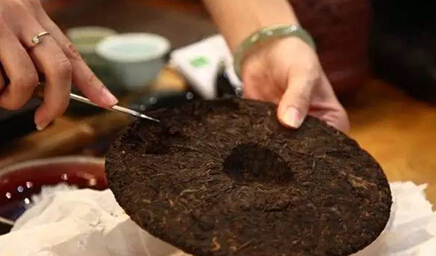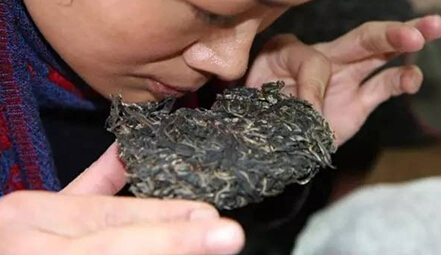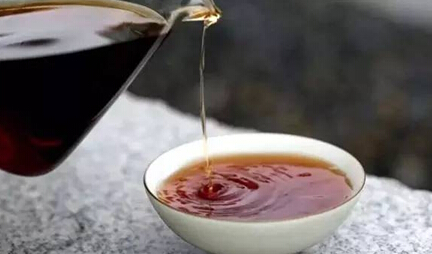Due to the characteristic of Pu-erh tea becoming 'more fragrant with age,' many novice tea enthusiasts often find themselves confused about the authenticity of the tea's vintage when purchasing. In reality, there are certain methods to identify the age of Pu-erh tea.

【Check Thickness and Looseness】
Randomly pick a few tea cakes from different years and press them gently. Those aged 5-6 years or more will clearly feel thicker and looser compared to newer teas. Long-term storage and natural fermentation cause aged tea to become more voluminous over time, sometimes even splitting the bamboo wrappers used to bundle them! This is the simplest and most direct method of identification.
【Smell the Aroma】

After unwrapping the paper, hold the tea cake close to your nose, exhale deeply onto it, and then inhale slowly for about 10 seconds to detect the scent. For ripe Pu-erh, teas aged less than three years may still carry a noticeable fermentation odor, while those aged five years or more will have lost it entirely. For raw Pu-erh, newer teas have a fresher, grassier aroma with a stronger smoky note, whereas aged raw Pu-erh develops a mellow, aged fragrance. Any off-putting or unusual smells indicate poor storage conditions, such as contamination or damp storage leading to mold. Experienced tea drinkers can even distinguish between sun-dried and oven-dried leaves, dry and wet storage, and sometimes even the tea's region of origin.
【Observe the Color】
Examine the tea leaves' texture and color closely. Ripe Pu-erh: older teas tend to fade to a reddish-brown hue. Raw Pu-erh: the color deepens with age, transitioning from green to yellow and eventually brown. A wine-red liquor is the standard for well-aged tea.
【Check the Liquor Color】

Teas aged less than three years have a cloudier liquor, while older teas become increasingly transparent. Ripe Pu-erh shifts from brown to red over time; raw Pu-erh transitions from green to yellow, and after a decade or more, from yellow to red.
【Taste】
Naturally, the older the tea, the more fragrant and mellow it becomes! However, taste preferences vary greatly among individuals.
【Observe Brewing Durability】
Aged tea withstands more infusions than new tea. Teas over 10 years old can endure 20 to 50 or more steepings.
In truth, Pu-erh teas of different vintages exhibit distinct differences in appearance, taste, aroma, and liquor color, requiring careful observation and patient tasting to discern. Novice tea buyers should prioritize purchasing from reputable merchants.